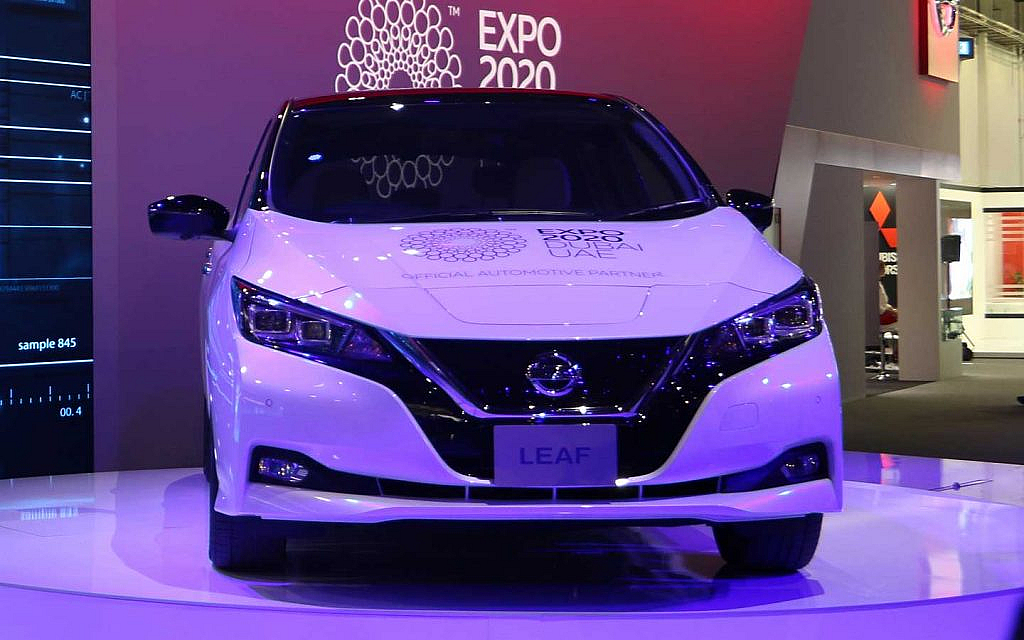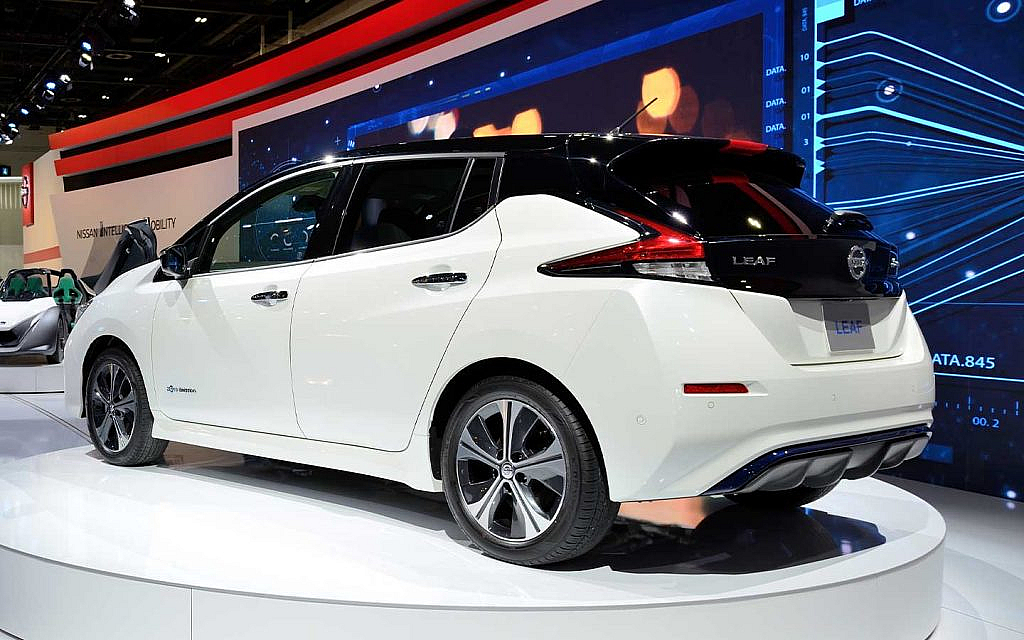Car History: Nissan Leaf
The Nissan Leaf has carved out a significant place in automotive history. It is the world’s first mass-market electric vehicle (EV). Debuting in December 2010, the Leaf initially hit the roads in Japan, Europe and America. Today, it’s driven in 59 markets with over half a million units sold globally. Let’s further explore Nissan Leaf’s history, from its inception to its current status, highlighting its evolution and technological advancements.
Explore Nissan Leaf’s History
Small in size but monumental in impact, the Nissan Leaf laid the groundwork for contemporary electric vehicles. It also revolutionised the concept of a car by integrating sustainable practices into everyday mobility. Beyond transportation, the Leaf’s technology supports powering homes and businesses, showcasing Nissan’s commitment to a sustainable future. Here is an evolution of Nissan Leaf models by year.
First Generation: 2010 – 2016

Nissan’s history reveals that the Leaf was born out of the automaker’s ambitious plans to lead the electric vehicle market. The early concept models were also unveiled at the 2009 Tokyo Motor Show, showcasing Nissan’s commitment to zero-emission mobility, marking a pivotal moment in Nissan’s electric car history. The Nissan Leaf was redesigned to appeal to the mass market and later evolved the electric car completely.
2010: The Birth of a Legend
The Leaf was introduced as the world’s first 100% electric car for the mass market, aiming to address urbanisation and industrial challenges. The first-generation Leaf boasted strong acceleration and handling, enhanced by a 24 kWh lithium-ion battery that offered a 200 km range on a full charge. Moreover, Nissan collaborated with governments and power companies to build a robust charging infrastructure, expanding from 200 CHAdeMO-standard quick chargers in Japan to over 30,000 globally. The car’s unique design, with its aerodynamic shape and eco-friendly interior, helps in reducing the carbon footprint of cars.
2011 – 2012: Awards and Recognition
The groundbreaking design and technology quickly garnered attention, earning it numerous awards, including the 2011 European Car of the Year, 2011 World Car of the Year and 2011-2012 Car of the Year Japan. These accolades also highlighted the Leaf’s impact on the automotive industry and its role in promoting sustainable transportation.
2012-2014: Pioneering Vehicle-to-Home Technology
Two years after its debut, Nissan introduced the Vehicle-to-Home (V2H) system, enabling Leaf owners to store energy in their car batteries and feed it back to their homes. This innovation proved invaluable during natural disasters, providing emergency power. The Leaf also participated in a smart grid project on Maui, helping stabilise the local power network.
The first major upgrade in 2012 increased the Leaf’s range to 228 km. This improvement came from a more compact and efficient electric powertrain, reducing volume by 30% and mass by 10%. The upgraded model also featured perks like heated seats and steering wheels, while Leaf’s sales surpassed the 100,000 mark in 2014.
2015: Further Advancements
The Leaf received a 30 kWh battery, extending its range to 280 km without sacrificing cabin space or charging time. New safety technologies, such as Intelligent Emergency Braking, were also introduced. By its fifth anniversary, Leaf sales approached 200,000 units. Later on in 2016, the automaker also launched the Nissan ProPilot 2.0 to enable ramp-to-ramp autonomous driving.
2017: The Second-Generation Leaf

In September 2017, Nissan unveiled the second-generation Leaf, featuring a complete redesign and a host of new technologies The second-generation Leaf brought Nissan Intelligent Mobility such as ProPILOT advanced driver assistance along with e-Pedal for one-pedal driving. Its new powertrain offered 38% more power and 26% more torque, with a 400 km range. By early 2018, 300,000 Leafs were on the road worldwide.
2018: Nissan Energy Innovations
Nissan Energy introduced new ways for the Leaf to interact with homes and businesses through smart storage and charging solutions. The Nissan Energy Home, showcased at the Nissan Global Headquarters Gallery, demonstrated these capabilities. Nissan also focused on recycling old batteries, with 4R Energy opening a plant in Fukushima for this purpose.
Leaf NISMO RC: Electrifying Motorsports
Nissan developed the Leaf NISMO RC to showcase the performance potential of electric vehicles. The first-generation NISMO RC debuted in 2011, while the second-generation model in 2018 featured twin motors, four-wheel drive and a power output of 240 kW.
2019: The Leaf e+
The Leaf e+ introduced a more powerful motor and a 62 kWh battery, extending the range to 458 km. By 2019, over 400,000 Leafs had been sold globally. The Leaf e+ also featured a more powerful electric motor, delivering 214 horsepower compared to the standard model’s 147 horsepower. This enhancement made the Leaf e+ more competitive with other EVs.
2020: Global Success
The Nissan Leaf’s affordability, practicality and advanced technology have contributed to its global success. By 2020, Nissan had sold over 500,000 Leafs worldwide, making it one of the best-selling electric cars of all time. The Leaf’s success has been particularly notable in markets such as Japan, the United States and Europe, where it has played a crucial role in promoting electric mobility.
2021 till Present: The Leaf’s Ongoing Legacy
In November 2021, Nissan revealed its long-term vision, Nissan Ambition 2030. Over the past decade, the Nissan Leaf has been at the forefront of the shift from internal combustion engines to zero-emission electric vehicles. It also has helped debunk myths about electric cars and demonstrated how quickly consumers can embrace this technology. The Leaf’s journey reflects a broader transformation in automotive engineering and lifestyle, paving the way for a more sustainable future.
Building on the success of the Leaf, Nissan is expanding its electric vehicle lineup. The company has introduced the Nissan Ariya at EXPO 2020 in Dubai, an all-electric crossover SUV and plans to launch several more EV models in the coming years. These efforts are part of Nissan’s broader strategy to achieve carbon neutrality and lead the global shift to sustainable transportation. If you want to know more about the brand, check out these interesting facts about Nissan.
FAQs
When did Nissan start making the Leaf?
The Nissan Leaf was first launched in December 2010.
Is the Nissan Leaf a Japanese car?
Yes, the first-generation Nissan Leaf is a Japanese car. It was manufactured by the Japanese automaker Nissan Motor Company from 2010 to 2017.
Here we conclude the Nissan Leaf’s history. The Nissan Leaf car history – from a groundbreaking concept to a leading electric vehicle – highlights Nissan’s commitment to innovation and vision. As one of the first mass-produced electric cars, the Leaf has played a pivotal role in shaping the EV landscape, setting new standards for efficiency, performance and sustainability.
If you are looking for a used Nissan for sale in the UAE, browse the listings here. Besides, if you are looking for other eco-friendly options, check out these new cars for sale in the UAE and find your new EV here.
Stay updated with the dubizzle auto blog to learn more about the history of your favourite car brands.
Cover image credits: Shutterstock Contributor: slava296
Comments
Post a Comment